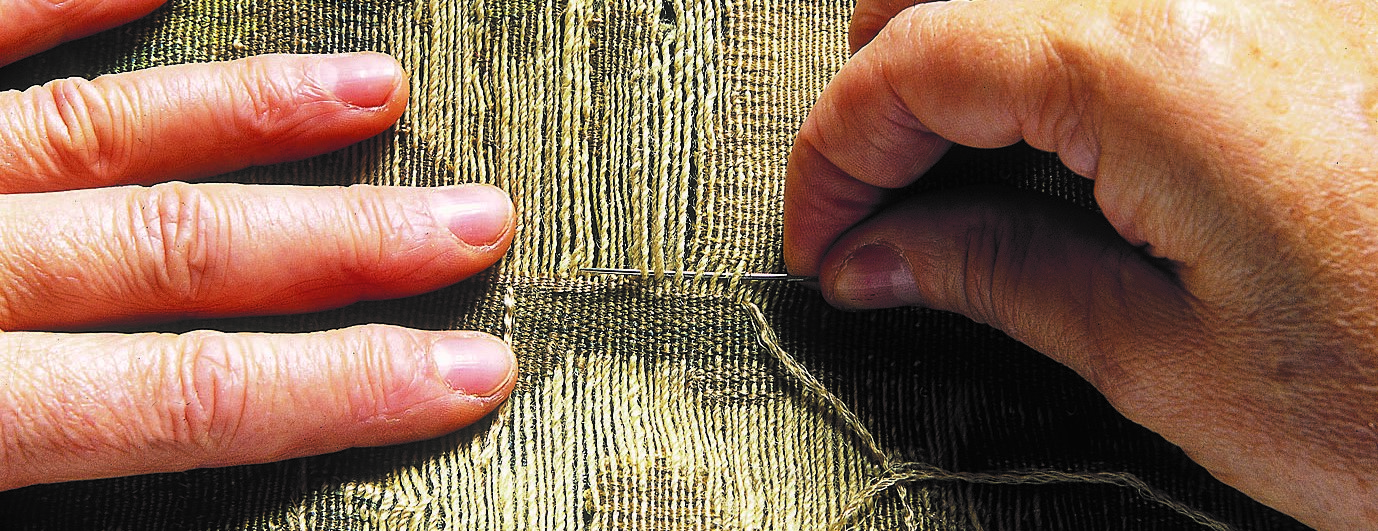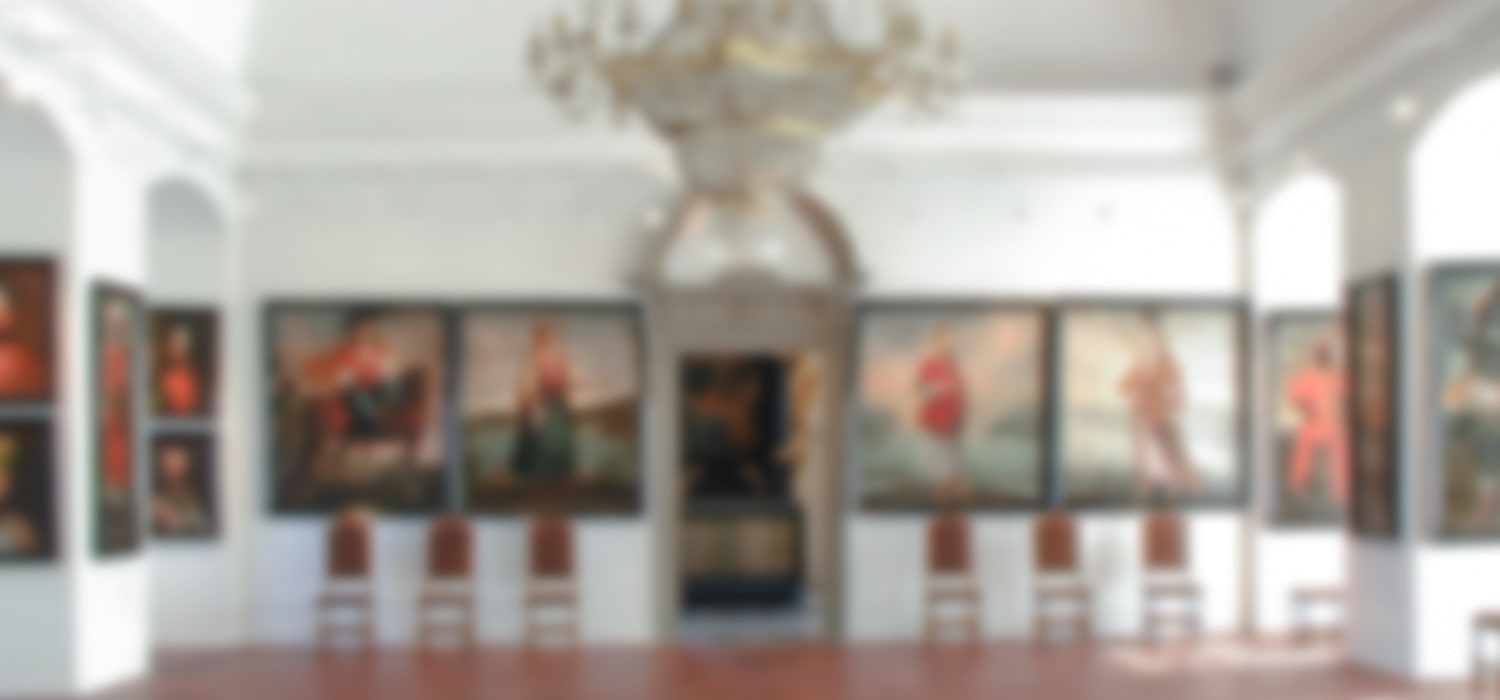THE BEAUTY AND ALLURE OF HISTORIC TEXTILES
THE GLAMOUR AND SPLENDOUR OF FABRICS WITH METALLIC THREADS
In addition to textile threads of plant and animal origin, metallic threads were often used to decorate fine fabrics, either woven into the warp or sewn onto the fabric as embroidery. Precious metals have been used to decorate secular and liturgical textiles since ancient times. The first written records of the use of gold thread are found in the Bible, where there is a description of Aaron’s ornate ceremonial garment (ephod).
In Slovenia, precious fabrics decorated with metal threads have been preserved on liturgical vestments, such as the chasuble or the so-called Coat of Hasan from the Kočevje Regional Museum, as well as on Baroque tapestries from Ptuj Castle. The different types of metal threads used to decorate textiles can be roughly divided into four groups, depending on the production technique. The metal threads used in historic textiles are either narrow strips or wire, though a combination metal thread made of a metal strip or wire spirally wrapped around a textile core, mostly of silk, linen, wool or cotton, was also popular. Today, aluminium is the main metal used to make metallic or metallized thread, whereas in the past metallic thread was made mainly of gold, silver, and copper. In the case of gold and gilded threads, the fibrous core was mostly yellow or reddish in colour, while in the case of silver or silvered threads it was white. Over the centuries, the tendency to reduce the amount of precious metals in embroideries and fabrics, and thus the price, led to the production of increasingly lighter metal threads. This also led to the use of paper, leather, parchment or animal intestines as a base. Thus, in the Middle Ages, threads made from gilded or silvered strips of organic materials were used in Europe, but they were not very durable. The delicate gilded or silvered layer on the strips would lose its shiny lustre quite quickly due to wear and tear.

